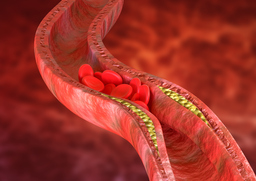Soluble Urokinase Plasminogen Activator Receptor (SuPAR) as a Therapeutic Target for Prevention and Treatment of Atherosclerosis
TECHNOLOGY NUMBER: 2021-428

OVERVIEW
Evidence for soluble urokinase plasminogen activator (suPAR) involvement in atherosclerosis- Laboratory and murine model confirmation that suPAR leads to coronary artery disease
- Provision of a target for treatment of atherosclerosis and coronary artery disease
BACKGROUND
Coronary artery disease (CAD) results from atherosclerosis and is associated with obesity, physical inactivity, tobacco use, and genetic susceptibility. Still, patients with similar risk factors for CAD show variability in their expression of the illness. Serum biomarkers aid in the delineation between those patients who experience clinical manifestations of CAD versus those who do not. Soluble urokinase plasminogen activator receptor (suPAR) is a signaling glycoprotein that reflects inflammation and activation of the immune system, and which has been shown to predict atherosclerosis and heart disease. While suPAR has been shown to be a marker of CAD severity and aggressiveness, its causative role in atherosclerosis has not yet been determined. As such, a need exists for further research that clearly delineates the relationship between suPAR and CAD.
INNOVATION
Researchers at the University of Michigan have discovered evidence through genetic and experimental studies that soluble urokinase plasminogen activator receptor (suPAR) serves as a mediator of atherosclerotic disease. Evaluation by Mendelian randomization of variants in the plasminogen activator urokinase receptor (PLAUR) gene that codes for suPAR shows its role in coronary artery disease and myocardial infarction. Mouse models of atherosclerosis confirm that over-expression of suPAR leads to an increase in atherosclerosis and changes in the heart muscle that are most likely to rupture and cause myocardial infarction. Conversely, mice whose suPAR expression is inactivated have no increase in atherosclerosis. This invention therefore shows a method for preventing or treating atherosclerosis by targeting suPAR through mechanisms such as the delivery of monoclonal antibodies, extraction of suPAR through apheresis, or through the use of newly developed oral medications.